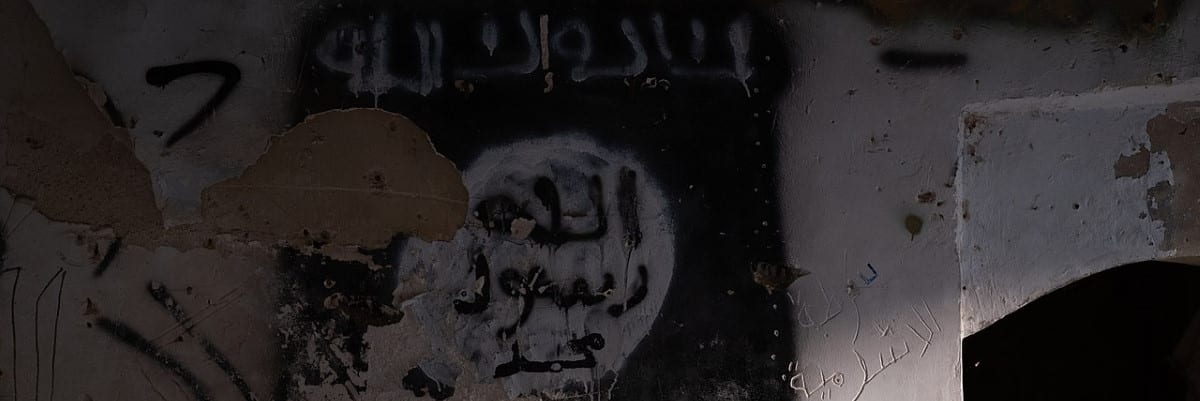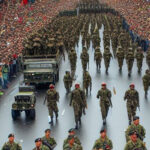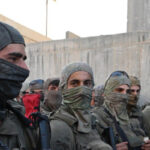The death of the leader of Isis, Abu Ibrahim al-Qurashi, occurred last February in the area of Idlib during a U.S. raid in collaboration with the Kurdish armed forces, opens a series of questions about the future of Isis and more generally about the jihadist activity and its supporters.
Al-Qurashi was located just 30km from where the Islamic State's historic leader, Abu Bakr al-Baghdadi, was killed in October 2019. This is an important element because it highlights how both Isis and the Qaedists of Hayyat Tahrir al-Sham (HTS) continue to coexist in the Idlib area. Striking is the detail that during the US raid, as reported by the Syrian Observatory for Human Rights, a jihadist of the latter group, theoretically a rival of Isis, was killed in the firefight.
The area of Idlib is in fact a historical stronghold of HTS and it is therefore inevitable to wonder how it is possible that they were not aware of the presence of al-Quraishi who from his house-hideaway continued to command a force of about 10 thousand men between Syria and Iraq. An Isis certainly not at the levels of its glory era, but still not defeated. It is plausible that the HTS leadership was aware of al-Quraishi's presence, just as it was probably aware in 2019 of al-Baghdadi's, but that an agreement was reached in function of the fight against common enemies, namely Bashar al-Assad and the pro-Iranian Shiite military presence.
It is also good to keep in mind the proximity to the Turkish border. Under al-Baghdadi's hiding place tunnels were found trespassing into Turkey, while in the areas under Turkish control of Afrin, Ras al-Ain and Tel Abyad, the presence of Isis jihadists continues to be reported, as explained on "Ahval" by David Phillips.
The raid to eliminate al-Qurashi was triggered by the Isis assault on Ghwayran prison in Hasaka last January 20. An overcrowded structure with more than 3500 jihadists detained (many of them still on the run). A very hard blow for the Coalition that leaves it clear that Isis continues to be a serious threat and far from being defeated.
The killing of al-Qurashi will not have particular repercussions on the activity of Isis and after all we have seen how the elimination of the jihadist leaders, from Bin Laden to al-Baghdadi, has never destroyed the organizations, which have however continued to operate replacing the leaders. In the case of Isis the matter is even more complex because of the lack of a real hierarchical structure and of a clear chain of command and control. Someone has even hypothesized that the next leader might not be an Iraqi like the previous two, but an Isis Khorasan exponent, perhaps its current leader Sanaullah Ghafari, on whose head Washington has put a bounty of $10 million. These are only hypotheses, but one thing is certain: Isis attacks will continue and the Coalition would do well to consider more carefully the activities between the areas controlled by the jihadists (both Isis and al-Qaeda) and Turkish territory.
Researcher of Centro Studi Politici e Strategici Machiavelli. Graduated in Sociology (University of Bologna), Master in "Islamic Studies" (Trinity Saint David University of Wales), specialization in "Terrorism and Counter-Terrorism" (International Counter-Terrorism Institute of Herzliya, Israel). He is senior analyst for the British Islamic Theology of Counter Terrorism-ITCT, theItalian Team for Security, Terroristic Issues and Managing Emergencies (Catholic University of Milan) and the Kedisa-Center for International Strategic Analysis. Lecturer for security managerlaw enforcement and post-degree courses, he has been coordinator for Italy of the European project Globsec. “From criminals to terrorists and back” and is co-founder of Sec-Ter- Security and Terrorism Observation and Analysis Group.









Scrivi un commento